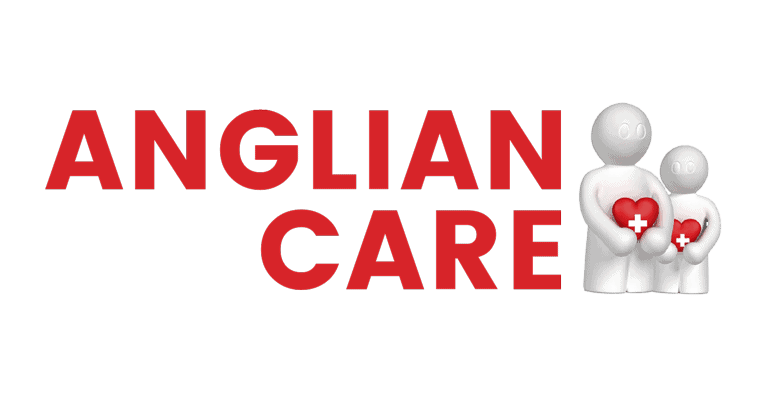Communication in health and social care is crucial for ensuring quality patient care. It includes various methods:
- Verbal: Clear, jargon-free language is essential.
- Non-verbal: Body language and facial expressions enhance understanding.
- Written: Proper grammar and visuals help convey complex information.
Effective communication builds trust, improves treatment adherence, and reduces medical errors. However, barriers like emotional distress, language differences, and physical impairments can hinder interactions. Strategies like active listening, diverse methods, and regular training can enhance communication skills. By understanding these elements, you can greatly improve patient-provider relationships and care outcomes. More insight awaits you ahead.
Definition of Communication
Communication in health and social care is the backbone of effective interaction, involving various methods like verbal, non-verbal, written, and visual communication. Understanding the definition of communication is fundamental for both care providers and recipients, particularly in a setting that emphasizes person-centered care. It's not just about speaking; it encompasses all ways of sharing information to foster understanding and trust.
Verbal communication includes the spoken words and tone you use. It's essential to choose clear and concise language, especially when discussing complex medical information. For example, when explaining medication instructions, using straightforward terms can prevent misunderstandings that might lead to errors.
On the other hand, non-verbal cues play a significant role in communication too. Body language, facial expressions, and eye contact can convey feelings and attitudes that words alone might miss. For instance, a warm smile or a nod can reassure a patient, making them feel valued and understood.
The cycle of communication includes sending, receiving, decoding, and providing feedback. This process guarantees clarity and addresses any misunderstandings that may arise. It's critical to listen actively and encourage questions, allowing for open dialogue that enhances understanding.
Importance in Health and Social Care
Effective interaction is essential in health and social care, as it directly impacts patient safety and the quality of care provided. When communication breaks down, the consequences can be severe, leading to medication errors and adverse events that jeopardize patient well-being. By prioritizing clear exchanges between patients and caregivers, you foster trust building, which is fundamental for enhancing patient satisfaction and outcomes. Organizations like Anglian Care emphasize continuous research and guidance to improve communication practices, guaranteeing that caregivers are well-equipped to engage with service users effectively. This commitment to person-centered care enhances the overall experience for individuals receiving care.
Here are some key points on the importance of communication in this field:
- Patient Engagement: Encouraging open dialogue empowers patients and their families to participate actively in their care. When patients feel heard, they're more likely to adhere to treatment plans and make informed decisions about their health.
- Trust Building: Establishing trust through compassionate communication helps to alleviate anxiety, especially for those facing mental or physical challenges. Patients who trust their caregivers are more likely to express concerns and share critical information.
- Continuity of Care: Effective communication promotes seamless information sharing among healthcare staff. This guarantees that everyone involved in a patient's care is informed about their needs, reducing the risk of miscommunication.
- Emotional Skills: Compassion and patience are essential for effective communication. When caregivers demonstrate these qualities, they create a supportive environment that encourages positive interactions.
Methods and Skills Required
In health and social care, mastering various communication methods and skills is fundamental for fostering understanding and collaboration. Effective communication involves multiple techniques, each serving a unique purpose. Here are some key methods and skills you should focus on:
- Verbal Communication: Use clear and concise language. Avoid jargon until you assess the listener's understanding. This guarantees everyone is on the same page. Additionally, training staff to communicate effectively is imperative for delivering high-quality care, as emphasized in Independent Home Care Services.
- Non-Verbal Communication: Be mindful of body language and facial expressions. Your awareness of personal and others' non-verbal cues can greatly enhance understanding and rapport.
- Written Communication: When documenting notes or reports, clarity is imperative. Correct grammar and punctuation help prevent misunderstandings, making it easier for others to follow your thoughts.
- Visual Communication: Utilize charts and diagrams to simplify complex information. This can make health-related concepts more accessible, especially for those who struggle with textual explanations.
- Active Listening: Engage fully with the speaker. This means not just hearing their words but understanding their feelings and perspectives. Reflect back what you hear to show you're listening.
- Empathy Building: Connect with others on an emotional level. Demonstrating empathy helps build trust and encourages open dialogue, which is essential in health and social care.
Combining these methods allows you to address the diverse communication needs of patients effectively. By honing these skills, you guarantee thorough understanding, leading to better care outcomes.
Barriers to Effective Communication
When trying to connect with patients or colleagues, various barriers can emerge that hinder your ability to communicate. Recognizing these barriers is essential for fostering effective interactions in health and social care. For instance, caregivers who specialize in dementia care, like those at Anglian Care, understand that tailored communication strategies can greatly alleviate emotional and cognitive hurdles. Here are four key barriers you might encounter:
- Emotional Barriers: Feelings like frustration, anxiety, or sadness can cloud judgment and make it difficult for service users to express their needs clearly. If a patient is overwhelmed, they may struggle to articulate their symptoms or concerns.
- Language Barriers: Differences in language, including the use of jargon or technical terms, can lead to misunderstandings. This is particularly problematic when caregivers and patients do not share a common language or when colloquial expressions confuse those not familiar with them.
- Cognitive Impairments: Health conditions such as dementia or learning disabilities can limit a person's ability to process information or communicate effectively. In such cases, alternative methods, like visual aids or simplified language, may be necessary.
- Environmental Challenges: High noise levels, uncomfortable settings, or even technology limitations can obstruct clear communication. For instance, if you're trying to talk in a crowded hospital waiting room, the surrounding chaos can make it hard for either party to focus.
Strategies for Improvement
Improving communication in health and social care starts with understanding the unique needs of each patient or colleague. To enhance interactions, you can implement tailored messaging, which involves customizing your communication style to meet the preferences and comprehension levels of those you work with. For instance, using clear, straightforward language can help patients grasp complex medical concepts, ultimately leading to better health outcomes.
Incorporating active listening techniques is just as important. Allowing patients time to process information and encouraging them to ask clarifying questions fosters an open dialogue. This not only empowers patients in their care decisions but also builds trust, which is vital in any healthcare setting.
Here's a quick list of strategies to improve communication:
- Regular Training: Engage healthcare professionals in ongoing training focused on communication skills to enhance patient understanding and care delivery effectiveness.
- Diverse Communication Methods: Utilize verbal, non-verbal, written, and visual communication to cater to different learning styles and prevent misunderstandings.
- Continuous Evaluation: Regularly assess and adapt your communication strategies to overcome barriers and make certain that you provide high-quality, patient-centered care.
Frequently Asked Questions
What Is Communication in Health and Social Care (Nhs)?
Communication in health and social care promotes patient engagement and fosters therapeutic relationships. You'll share essential information, build trust, and guarantee you understand each patient's needs, ultimately enhancing their care experience and outcomes.
What Are the Means of Communication in Healthcare?
In healthcare, you use verbal communication, nonverbal cues, and digital channels to connect. Active listening and patient feedback enhance empathetic engagement, while cultural sensitivity fosters interdisciplinary collaboration, ensuring thorough care for diverse patient needs.
What Is the Definition of Health Communication?
Health communication's about sharing information to enhance health literacy and promote effective messaging. It helps you make informed health choices, engage with healthcare providers, and ultimately leads to better health outcomes for you and your community.
Why Is Communication Important in Social Care?
Communication's essential in social care because it fosters trust and understanding. By practicing effective listening and recognizing nonverbal cues, you can better address needs, enhance satisfaction, and ultimately improve the quality of care provided.





